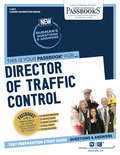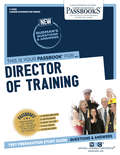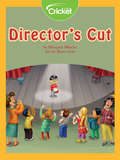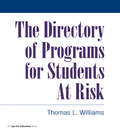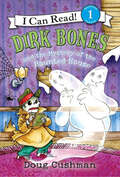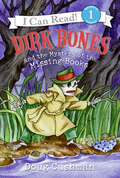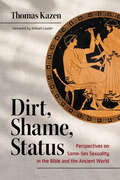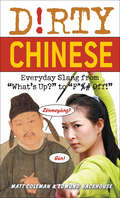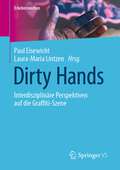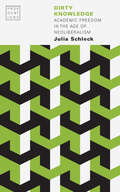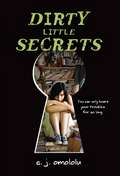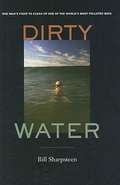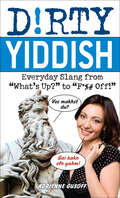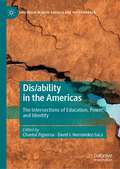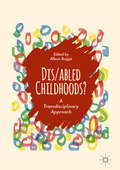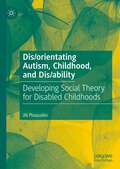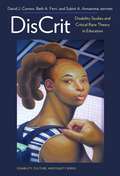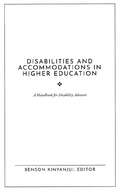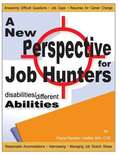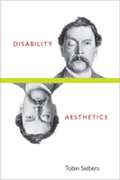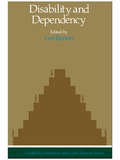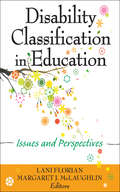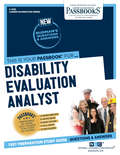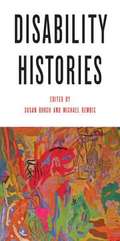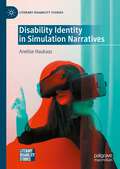- Table View
- List View
Director of Traffic Control: Passbooks Study Guide (Career Examination Series)
by National Learning CorporationThe Director of Traffic Control Passbook® prepares you for your test by allowing you to take practice exams in the subjects you need to study. It provides hundreds of questions and answers in the areas that will likely be covered on your upcoming exam, including but not limited to: traffic control devices and regulations; design, construction, operation and maintenance of parking structures and facilities; administrative supervision; collection, evaluation and presentation of data; and more.
Director of Training: Passbooks Study Guide (Career Examination Series)
by National Learning CorporationThe Director of Training Passbook® prepares you for your test by allowing you to take practice exams in the subjects you need to study. It provides hundreds of questions and answers in the areas that will likely be covered on your upcoming exam, including but not limited to; Tuition- reimbursement plans; Human relations laboratory training; Executive seminars; Staff development training methods; and more.
Director's Cut
by Margaret MincksThe director of the Cosgrove Elementary school play learned that directing a play is a great way to make enemies. Casting is not that easy, especially when there are Talented Terrors involved.
Directory of Programs for Students at Risk
by Thomas WilliamsThis book summarizes over 40 programs which enhance the success of students at risk. The emphases of these programs include individual students' learning skills, whole-school improvement, professional development, and parent and family improvement. Names and addresses of key people at each site are also included.
Dirk Bones and the Mystery of the Haunted House (I Can Read Level 1)
by Doug CushmanAn exciting, gently spooky, and fun early reader detective adventure!You'll join School Library Journal is welcoming this Level One I Can Read "to the primer shelves both at Halloween time and throughout the year."Dirk Bones and the Mystery of the Haunted House is a Level One I Can Read book, which means it’s perfect for children learning to sound out words and sentences. Whether shared at home or in a classroom, the short sentences, familiar words, and simple concepts of Level One books support success for children eager to start reading on their own.
Dirk Bones and the Mystery of the Missing Books (I Can Read Level 1)
by Doug CushmanFrom the master of beginning reader mysteries, Doug Cushman, comes the second adventure of ace reporter Dirk Bones—and the mystery is as silly and spooky as ever!
Dirt, Shame, Status: Perspectives on Same-Sex Sexuality in the Bible and the Ancient World
by Thomas KazenA scholarly examination of same-sex sexuality in the Bible in the context of the ancient world Scriptural prohibitions of same-sex sexual acts (so-called &“clobber passages&”) are often used as prooftexts to support the oppression of LGBT communities in the West today. However, such interpretation of these scant references ignores critical sociohistorical context from the ancient world. Analyzing a wealth of primary sources, Thomas Kazen brings biblical studies into conversation with the sexual norms and practices of the ancient world. Near Eastern, Greek, and Roman texts, including the Old and New Testaments, exhibit ancient concerns about hierarchy in sexual relationships. Examining references to sexuality through the lenses of power and subordination, honor and shame, and purity, Kazen sheds light on homophobic passages in the Bible. Special attention is given to the Levitical laws and the Pauline epistles. Ultimately, Kazen calls us to renegotiate the balance between our ancient heritage and our contemporary values. Carefully researched and accessibly presented, Dirt, Shame, Status lends readers insight into the diverse cultural influences on the Bible. Kazen&’s work offers an informed and important perspective on a controversial topic of perennial interest. Scholars, students, and all curious readers of Scripture will find this volume to be an indispensable resource for understanding complex ancient texts and contexts.
Dirty Chinese: Everyday Slang from "What's Up?" to "F*%# Off!" (Dirty Everyday Slang)
by Matt Coleman Edmund BackhouseFoul your mouth—while expanding your Mandarin vocabulary—with a guide to the phrases that could get you a laugh . . . or a punch in the face.Next time you’re traveling or just chattin’ in Chinese with your friends, drop the textbook formality and bust out with expressions they never teach you in school, including:Cool slangFunny insultsExplicit sex termsRaw swear wordsDirty Chinese teaches the casual expressions heard every day on the streets of China:What’s up? Zenmeyàng?Fuck it, let’s party. Qù tama, zánmen chuqù feng ba.Who farted? Shéi fàng de pì?Wanna try doggy-style? Yàobù zánliar shìshì gou cào shì?Son of a bitch! Gouniángyang de!I’m getting smashed. Wo ganjué heduo le.I can’t eat this shit! Wo chi bù xià qù!
Dirty Hands: Interdisziplinäre Perspektiven auf die Graffiti-Szene (Erlebniswelten)
by Paul Eisewicht Laura-Maria LintzenDieser Band vereint erstmals Beiträge aus verschiedenen Disziplinen (Kunst-, Rechts-, Erziehungs- und Sozialwissenschaften) zur deutschen Graffiti-Szene. Dabei verschränken sich Perspektiven von außen auf die Szene mit Sichtweisen von innen. Über die Beiträge hinweg wird dabei deutlich, wie facettenreich Graffiti als kulturelles Phänomen ist und wie anschlussreich methodische und theoretische Perspektiven der Kultur- und Sozialwissenschaften daran sind. Abseits gesellschaftlicher Typisierungen, Dramatisierungen, Missverständnisse und Mythen werden dabei der Szenealltag, die Szenegeschichte und die Handlungsprobleme der Writer beleuchtet.
Dirty Knowledge: Academic Freedom in the Age of Neoliberalism (Provocations)
by Julia SchleckDirty Knowledge explores the failure of traditional conceptions of academic freedom in the age of neoliberalism. While examining and rejecting the increasing tendency to view academic freedom as a form of free speech, Julia Schleck highlights the problem of basing academic freedom on employment protections like tenure at a time when such protections are being actively eliminated through neoliberalism&’s preference for gig labor. The argument traditionally made for such protections is that they help produce knowledge &“for the public good&” through the protected isolation of the Ivory Tower, where &“pure&” knowledge is sought and disseminated. In contrast, Dirty Knowledge insists that academic knowledge production is and has always been &“dirty,&” deeply involved in the debates of its time and increasingly permeated by outside interests whose financial and material support provides some research programs with significant advantages over others. Schleck argues for a new vision of the university&’s role in society as one of the most important forums for contending views of what exactly constitutes a societal &“good,&” warning that the intellectual monoculture encouraged by neoliberalism poses a serious danger to our collective futures and insisting on deliberate, material support for faculty research and teaching that runs counter to neoliberal values.
Dirty Little Secrets
by C. J. OmololuWhen her unstable mother dies unexpectedly, sixteen-year-old Lucy must take control and find a way to keep the long-held secret of her mother's compulsive hoarding from being revealed to friends, neighbors, and especially the media.
Dirty Water: One Man’s Fight to Clean Up One of the World’s Most Polluted Bays
by Bill SharpsteenDirty Water is the riveting story of how Howard Bennett, a Los Angeles schoolteacher with a gift for outrageous rhetoric, fought pollution in Santa Monica Bay--and won.
Dirty Yiddish: Everyday Slang from "What's Up?" to "F*%# Off!" (Dirty Everyday Slang)
by Adrienne GusoffNext time you’re chattin’ with your khaverim (friends) and mishpukheh (family), bust out some Yiddish expressions that’ll liven up the conversation.Nothing is censored in Dirty Yiddish. It includes phrases for any situation, so readers have enough chutzpah (balls) to tell the local deli that they’ve waited long enough for their knish, and explicit swear words crude enough to shock Bubby and everyone else at the Passover seder. There’s even vulgar sex terminology so graphic it puts the outspoken Lower East Side princesses to shame. Bust out with expressions they never teach you in school, including cool slang, funny insults, explicit sex terms, and raw swear words. Dirty Yiddish teaches the casual expressions heard every day on the streets of New York . . . What’s up? Vos makhst du?Crazy bastard! Meshuggeneh momzer!I’m hammered. Ikh bin fershikkert.Don’t fuck with me! Bareh mikh nit!I have the shits. Ikh hob a shittern mogn.Lick my pussy. Lekh meyn lokh.Was it good for you? Tsufreedn?
Dis/ability in the Americas: The Intersections of Education, Power, and Identity (Education in Latin America and the Caribbean)
by Chantal Figueroa David I. Hernández-SacaThis edited volume highlights the rich and complex educational debates around Critical Disability Studies in Education (DSE), critical mental health, and crip theories. Chapter authors use the term Dis/ability to criticize aspects of education research and international development that do not center the experiences of dis/abled students and people with dis/abilities. Through case studies from around the Americas, chapters highlight how top-down approaches to disabilities further oppress rather than emancipate. The volume prioritizes the spaces of resistance where local initiatives speak back to the demands imposed by an ever-globalizing world shaped by colonialism and imperialism, undergird by intersectional ableism. Voices of disabled students and people with dis/abilities counter-narrate the personal, interpersonal, structural, and political ways in which biomedical and psychological models of disability have impacted their well-being throughout education and society in the Americas. Through a critical sentipensante approach that centers the “epistemologies of the south,” this volume challenges global mental health and dis/ability hegemony in the Americas.
Dis/abled Childhoods?
by Allison BoggisThis edited collection explores the intersectionality of childhood and disability. Whereas available scholarship tends to concentrate on care-giving, parenting, or supporting and teaching children and young people with special educational needs and disabilities, the contributors to this collection offer an engaging and accessible insight into childhoods that are impacted by disability and impairment. The discussions cut across traditional disciplinary divides and offer critical insights into the key issues that relate to disabled children and young people's lives, encouraging the exploration of both disability and childhoods in their broadest terms. Dis/abled Childhoods? will be of interest to students and scholars across a range of disciplines including Special Educational Needs; Childhood Studies; Disability Studies; Youth Studies; and Health and Social Care.
Dis/orientating Autism, Childhood, and Dis/ability: Developing Social Theory for Disabled Childhoods
by Jill PluquailecThis book considers the many ways autistic lives have been dominantly storied historically, politically, socially, and culturally. Using a range of transdisciplinary theory, the author develops a theoretically rich approach termed ‘dis/orientation’, which breaks new ground for autism research’s understanding of everyday life, and everyday childhoods. The book uses stories of everyday life to provoke new analyses of what it means to talk about, live with, and become, an autistic child: these stories of schooling and education highlight what is done to autistic bodies, what is done by these bodies, and what becomes between them. This offers a way in to the theoretical work of dis/orientation; a practice and an ethic, that means remaining ever watchful for single orientations towards (and away from) autism and childhood, and the children living those childhoods. This leads to new disciplinary grounds, a reconceptualisation of the terrains of research and practice, not of the disordered and disembodied autistic mind, but of the embodied, lived, and everyday.
DisCrit: Disability Studies and Critical Race Theory in Education
by David J. Connor Beth A. Ferri Subini A. AnnammaIn this groundbreaking volume, scholars examine the achievement/opportunity gaps from both historical and contemporary perspectives, as well as the overrepresentation of minority students in special education and the school-to-prison pipeline. Chapters also address school reform and the impact on students based on race, class, and dis/ability and the capacity of law and policy to include (and exclude).
Disabilities and Accommodations in Higher Education: A Handbook For Disability Advisors
by Benson KinyanjuiDISABILITIES AND ACCOMMODATIONS IN HIGHER EDUCATION: A HANDBOOK FOR DISABILITY ADVISORS
Disabilities/Different Abilities
by Paula Reuben VieilletThis is a hands-on workbook which will help the job hunter who has a disability secure employment. Step by step, this manual guides the job hunter through the vocational process in an honest and positive manner so as to get results. It is designed for individual usage, or in conjunction with a trained professional. The first section, Getting to Know You, addresses self-esteem, personal values and job goal definition and includes motivational strategy. The second section, Facing Workplace Discrimination, reviews application and interviewing functions with a focus on eliminating discrimination in the hiring process. Typical concerns of job hunters are answered in a straightforward and informative manner. The third section, Ready, Set, Go, deals with feelings and concerns regarding returning to work and includes a handy reference guide of available resources for job hunters with disabilities.
Disability Aesthetics
by Tobin SiebersDisability Aesthetics ambitiously redefines both 'disability' and 'aesthetics,' showing us that disability is central not only to modern art but also to the way we apprehend (and interact with) bodies and buildings. Along the way, Tobin Siebers revisits the beautiful and the sublime, 'degenerate' art and 'disqualified' bodies, culture wars and condemned neighborhoods, the art of Marc Quinn and the fiction of Junot Díaz---and much, much more. Disability Aesthetics is a stunning achievement, a must-read for anyone interested in how to understand the world we half create and half perceive." ---Michael Bérubé, Paterno Family Professor in Literature, Pennsylvania State University. "Rich with examples of the disabled body in both historical and modern art, Tobin Siebers's new book explores how disability problematizes commonly accepted ideas about aesthetics and beauty. For Siebers, disability is not a pejorative condition as much as it is a form of embodied difference. He is as comfortable discussing the Venus de Milo as he is discussing Andy Warhol. Disability Aesthetics is a prescient and much-needed contribution to visual & critical studies." ---Joseph Grigely, Professor of Visual and Critical Studies, The School of the Art Institute of Chicago. Disability Aesthetics is the first attempt to theorize the representation of disability in modern art and visual culture. It claims that the modern in art is perceived as disability, and that disability is evolving into an aesthetic value in itself. It argues that the essential arguments at the heart of the American culture wars in the late twentieth century involved the rejection of disability both by targeting certain artworks as "sick" and by characterizing these artworks as representative of a sick culture. The book also tracks the seminal role of National Socialism in perceiving the powerful connection between modern art and disability. It probes a variety of central aesthetic questions, producing a new understanding of art vandalism, an argument about the centrality of wounded bodies to global communication, and a systematic reading of the use put to aesthetics to justify the oppression of disabled people. In this richly illustrated and accessibly written book, Tobin Siebers masterfully demonstrates the crucial roles that the disabled mind and disabled body have played in the evolution of modern aesthetics, unveiling disability as a unique resource discovered by modern art and then embraced by it as a defining concept. Tobin Siebers is V. L. Parrington Collegiate Professor of English Language and Literature and Art and Design at the University of Michigan. His many books include Disability Theory and The Subject and Other Subjects: On Ethical, Aesthetic, and Political Identity. A volume in the series Corporealities: Discourses of Disability.
Disability And Dependency (Disability, Handicap And Life Chances Ser. #Vol. 5)
by Len BartonFirst published in 1989. Routledge is an imprint of Taylor & Francis, an informa company.
Disability Classification in Education: Issues and Perspectives
by Lani Florian Margaret J. McLaughlinThis edited volume examines current disability classification systems, the dilemmas educators face in categorizing students with special needs, and alternative options based on recent challenges and trends.
Disability Evaluation Analyst: Passbooks Study Guide (Career Examination Series)
by National Learning CorporationThe Disability Evaluation Analyst Passbook® prepares you for your test by allowing you to take practice exams in the subjects you need to study. It provides hundreds of questions and answers in the areas that will likely be covered on your upcoming exam, including but not limited to: interpret and accurately apply written laws, rules, regulations, policies and procedures; gather and analyze data; report writing; understanding and interpreting written material; evaluating conclusions in light of known facts; interviewing; and other related areas.
Disability Histories
by Susan Burch Michael RembisThe field of disability history continues to evolve rapidly. In this collection, Susan Burch and Michael Rembis present nineteen essays that integrate critical analysis of gender, race, historical context, and other factors to enrich and challenge the traditional modes of interpretation still dominating the field. As the first collection of its kind in over a decade, Disability Histories not only brings readers up to date on scholarship within the field but fosters the process of moving it beyond the U.S. and Western Europe by offering work on Africa, South America, and Asia. The result is a broad range of readings that open new vistas for investigation and study while encouraging scholars at all levels to redraw the boundaries that delineate who and what is considered of historical value. Informed and accessible, Disability Histories is essential for classrooms engaged in all facets of disability studies within and across disciplines. Contributors are Frances Bernstein, Daniel Blackie, Pamela Block, Elsbeth Bösl, Dea Boster, Susan K. Cahn, Alison Carey, Fatima Cavalcante, Jagdish Chander, Audra Jennings, John Kinder, Catherine Kudlick, Paul R. D. Lawrie, Herbert Muyinda, Kim E. Nielsen, Katherine Ott, Stephen Pemberton, Anne Quartararo, Amy Renton, and Penny Richards.
Disability Identity in Simulation Narratives (Literary Disability Studies)
by Anelise HaukaasDisability Identity in Simulation Narratives considers the relationship between disability identity and simulation activities (ranging from traditional gameplay to more revolutionary technology) in contemporary science fiction. Anelise Haukaas applies posthumanist theory to an examination of disability identity in a variety of science fiction texts: adult novels, young adult literature and comics, as well as ethnographic research with gamers. Haukaas argues that instead of being a means of escapism, simulated experiences are a valuable tool for cultivating self-acceptance and promoting empathy. Through increasingly accessible technology and innovative gameplay, traditional hierarchies are dismantled, and different ways of being are both explored and validated. Ultimately, the book aims to expand our understandings of disability, performance, and self-creation in significant ways by exploring the boundless selves that the simulated environments in these texts allow.
